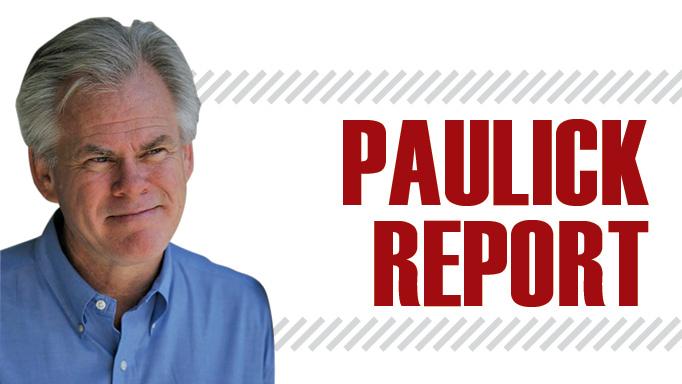I came across that question recently while reading an editorial in a racing publication. It wasn’t from last week, last year, or even the last decade.
The editorial, written by J.A. Estes, longtime editor of The Blood-Horse, was published in the weekly magazine’s May 10, 1941, edition. It was spurred on by a vote of Florida lawmakers to increase pari-mutuel takeout from 10 to 15 per cent.
While he began the editorial with a question, Estes had his only point of view.
“We seem to be passing from the field of inane speculation into a bright new region of scientific inquiry,” Estes wrote, “where, sooner or later, through the unopposable argument of actual test, we shall discover how much take-out is necessary to destroy racing, even as a piece of metal is broken in order to discover its tensile strength.”
Times were much simpler then.
The only “exotic” wager was the daily double, when horseplayers tried to select the winners of the day’s first two races. Otherwise, it was win, place or show – and that’s it. There were no exactas, trifectas or superfectas, no pick threes, fours, fives or sixes. The only place to make a bet (legally) was at the track.
I have to wonder what Estes would think about some of these new exotic bets and the takeouts at upwards of 25 per cent or more that accompany them.
Rising takeouts came along with the introduction of new exotic bets, the theory being, I assume, that these types of wagers have higher payoffs. Does it really matter to a horseplayer if his winning superfecta pays $3,000 or $2,500? Either way it’s a nice score, right?
Wrong.
I’m hearing more frequently than ever that the game is getting tougher to beat.
Takeout has a lot to do with that. One would think it’s pretty simple economics. Lower the takeout, returning more to the player from each dollar wagered, and those players will have a better chance of winning. In turn, winners churn more money back into the pools.
Unfortunately, it’s not that simple.
Woodbine lowered takeout on win bets in 2013, but handle did not increase.
How can that be?
A significant percentage of handle at Woodbine and other North American tracks comes through rebate shops: online wagering companies that do not have the expenses associated with operating a racetrack. They recruit high-volume players with the promise of a rebate on each dollar wagered, effectively lowering the takeout for those players.
Some of the best customers of these rebaters have developed complex programs to identify the most probable winners and best value plays in a race, then send in large-volume bets in an instant. A few of these individuals using computer-assisted betting have created their own advance-deposit wagering companies to avoid the middleman.
Let’s say a rebater pays 9 per cent to Track A for the right to wager into that track’s pari-mutuel pools. If Track A’s takeout is 20 per cent, that leaves the rebater with an 11 per cent margin, minus expenses. That’s enough margin to offer a substantial rebate to a large better on every dollar wagered.
If the rebater pays 9 per cent to Track B for the right to wager into the pools, and that track’s takeout is 15 per cent, there’s a much smaller margin for rebates.
Players will favor the tracks where they can get the highest rebate, everything else (pool size, wagering value, etc.) being equal.
One of the byproducts of rebaters and computer-assisted players is an imbalance.
When accounts are settled between the rebater and the host track, the rebaters are often net winners. In other words, their players are coming out ahead and the host tracks have to send money to the rebaters for distribution to their customers. That makes it more difficult for the traditional player betting through the windows at the track.
If we could somehow turn back the clock to 1941, we wouldn’t have to worry about rebate operations or computer-assisted betting. The simple formula of lowering the cost of your product to increase sales would work.
That, I’m afraid, is not going to happen. “Rising takeouts came along with the introduction of new exotic bets, the theory being, I assume, that these types of wagers have higher payoffs.”


